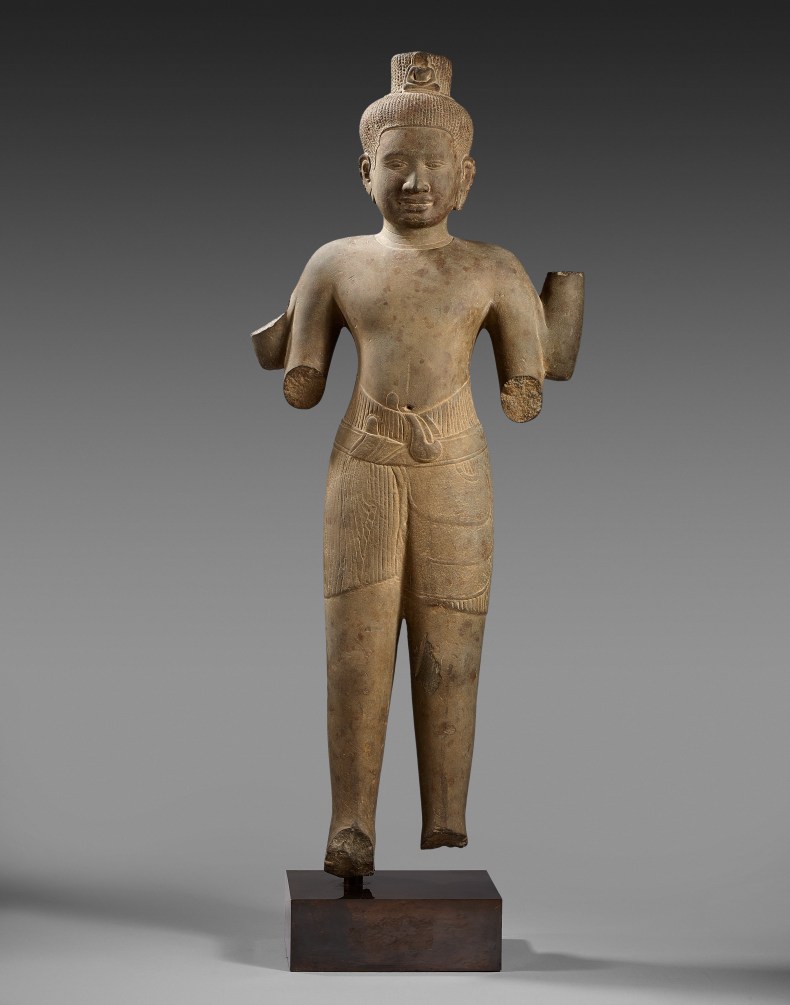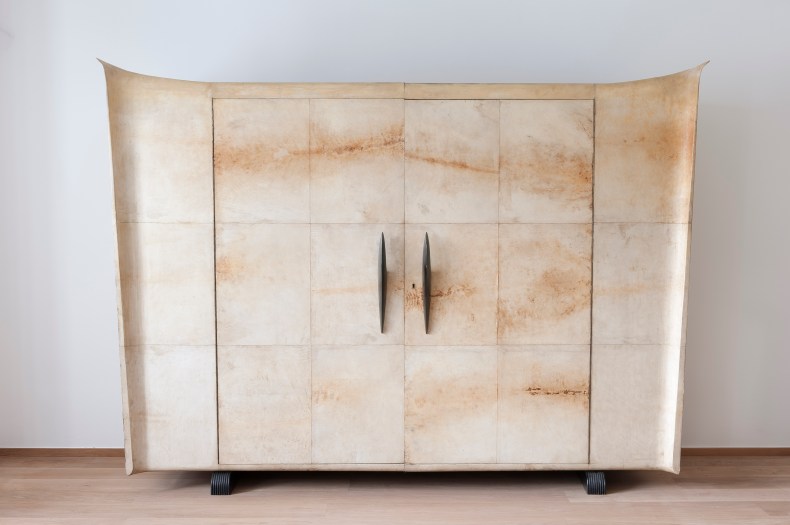As Harold t’Kint de Roodenbeke, BRAFA President for the fifth consecutive year, comments wisely, ‘The scenario for art fairs such as ours is perpetually changing.’ The event, which is now in its 62nd year, may appear a stately and immoveable fixture, but in today’s competitive fair calendar, in which both dealers and collectors can choose where to focus their energies, it is only by constant reinvention that it survives. Run from the start by the non-profit Belgian Antiques Fair Association, it has always aimed to serve the interests of its members by attracting as eager and eclectic a client base as possible. Unlike many other fairs, BRAFA covers the whole of art history, from antiquity to the present day, displaying objects from cultures as far apart in time and geography as Oceania, the kingdom of Gandhara, 20th-century America, and present-day Europe. It is a temporary universal museum – albeit within a definitively European tradition. And as collecting fields have risen and fallen in interest among their core collectors, so the organisers have adjusted their focus – this year, for instance, welcoming several more modern and contemporary galleries to the fair. Leading specialist dealers – from Belgium and beyond – continue to exhibit, in Belgium’s traditionally strong sectors of 19th-century paintings, tribal, and ancient art. But breadth must be balanced by excellence and, in these increasingly shaky times, where allegations of looting or faking can introduce uncertainty into even the most established markets, the vetting has to be unimpeachable. ‘We call on more than a hundred independent experts,’ says t’Kint de Roodenbeke, ‘to whom we offer state-of-the-art services of a specialist scientific laboratory during the pre-show inspection period.’

Flâneur (2016), Joana Vasconcelos. La Patinoire Royale. Photo: © Unidade Infinita Projectos; © Galerie Valérie Bach, Brussels/the artist
It is perhaps in subtle acknowledgement of the constant balancing act required to meet collector tastes that this year the organisers have decided to invite the Argentinian-born, Paris-based artist Julio Le Parc to offer a thematic thread. Le Parc (b. 1928) creates artworks where nothing is stable – lights pulsate, mirrors reflect and distort, and the spectator is encouraged to become an equal partner in constructing meaning. At BRAFA four of his works will be placed at different points around the fair; a large-scale Continuel Mobile from 1963 at the entrance, with Surface Couleur, a 1970 acrylic on canvas at the centre, and two Sphères measuring more than two metres across on each patio at the end of the aisles. La Patinoire Royale, a specialist dealer in plastic art and design, will have a Le Parc available to buy – an optical painting of 1991, Quantitative Sequences, part of a series conceived in 1959. It also offers work by Portuguese artist Joana Vasconcelos, the Swiss graphic designer Karl Gerstner and Victor Vasarely (often regarded as the father of the Op Art movement). Other exhibitors will pick up the ‘kinetic’ theme by showing work by Vasarely – including Galerie Berès from Paris (which also has a Bonnard watercolour), Milan-based Robertaebasta, Post-Impressionist specialists Galerie Hurtebize from Cannes, and Galerie Pascal Lansberg, another Parisian dealer.
Work by the Belgian contemporary artist Fred Eerdekens (b. 1951), demonstrates the continuing impact of those pioneers of optical and kinetic art. His conceptual sculptures using language, shadows, and light will be shown by the young dealer Samuel Vanhoegaerden, who specialises in post-1945 work. The fair designers, Nicolas de Liedekerke and Daniel Culot of Volume Architecture, have also adopted the theme for this year’s decoration – with floor patterns continuing up the walls to confuse the eye’s perception of three-dimensional space and specially commissioned kinetic installations, incorporating flowers, which articulate the layout of corridors. As Liedekerke explains, ‘The difficulty is to do something special, but on the other hand to enable the exhibitors to show their pieces to best advantage.’

Bodhisattva Avalokitesvara, Khmer, late 11th century. Galerie Christopher Hioco
As usual, there are many fine pieces belonging to every specialism. De Backker Medieval Art, whose stand is always impressive, is bringing a beautiful gessoed, gilded cassone from northern Italy, dating from around 1500 and decorated with figures and mythological animals; as well as a delicately carved limestone Seated Virgin and Child from Lorraine, from the first quarter of the 14th century. London-based Haute Époque specialists Mullany Fine Art will show a charming, rounded figure, carved in walnut, of the Christ Child Blessing, from the early 16th-century Mechelen school, alongside a poignant southern German limewood Pietà of around 1520 by Endras Maurus. Galerie Christophe Hioco, meanwhile, will pursue the inspiration of Buddhism in sculpture from the Gandharan civilisation to Japan. A particular highlight is the standing Khmer stone figure of Bodhisattva Avalokitesvara, in the style of the Baphuon period, dating from the late 11th century, with its four arms, serene expression and the delicate carving of the costume. Belgian tribal arts dealer Bernard de Grunne, by contrast, returning to the fair after a 12-year break, is staging an ambitious dialogue between some striking, highly colourful Pende masks from the Democratic Republic of Congo and the work of two contemporary artists – the Belgian artist and designer Isabelle de Borchgrave and the Italo-Senegalese artist Maïmouna Guerresi – while also offering a selection of exquisite classical tribal pieces. Galerie Deletaille will offer a beautifully modelled Pre-Columbian monumental seated figure made of buff earthenware, from 600–900 AD. Antiquair K. Grusenmeyer in association with Damien Woliner will show an astonishing ceremonial Maori adze. Shaped like an axe, with an intricately carved wooden handle and vivid greenstone blade, it is a symbol of a chief’s authority.

Vellum-covered cabinet with black wood handles, made by Valzania. Galerie Anne Autegarden
The fair’s strength in ancient, tribal, and medieval art is matched by the growing number of modern and contemporary galleries. Long-time exhibitor Whitford Fine Art, from London, is featuring works from the 1950s by newly rediscovered artist Frank Avray Wilson, the only British Tachist painter to have exhibited frequently in Belgium, alongside a display of works by the Belgian modern artists, Joseph Lacasse, Bram Bogart, and Paul Van Hoeydonck. Newcomer Omer Tiroche, a modern and contemporary dealer from London operating in both the secondary and primary market, will show a fine early painting by Pierre Soulages: ‘Painting’, 28 May 1954, with dramatic, almost calligraphic black lines over layered colours, alongside works by Hans Hartung and Karel Appel. Finally, in addition to well known fine antique furniture dealers such as Galerie Berger and the Parisian Galerie Steinitz, modern and contemporary design is a strong feature this year. Anne Autegarden, who specialises in Italian design from 1920 until 1980, is making a particular splash with her spectacular mid-century vellum-covered sculptural cupboard with two doors, from the Italian cabinetmaking firm Valzania, the soft vellum set off dramatically by two black door handles. This astonishing piece alone should revive the enthusiasm of the most jaded fair-goer.
BRAFA takes place at Tour & Taxis, Brussels, from 21–29 January.
From the January 2016 issue of Apollo. Preview and subscribe here.














![Masterpiece [Re]discovery 2022. Photo: Ben Fisher Photography, courtesy of Masterpiece London](http://zephr.apollo-magazine.com/wp-content/uploads/2022/07/MPL2022_4263.jpg)
‘Like landscape, his objects seem to breathe’: Gordon Baldwin (1932–2025)